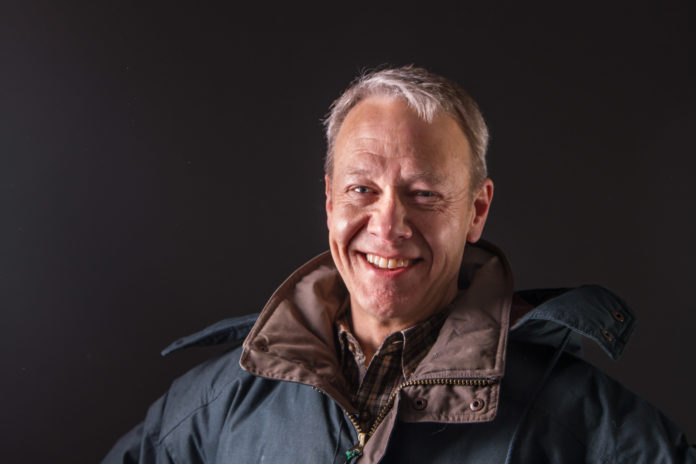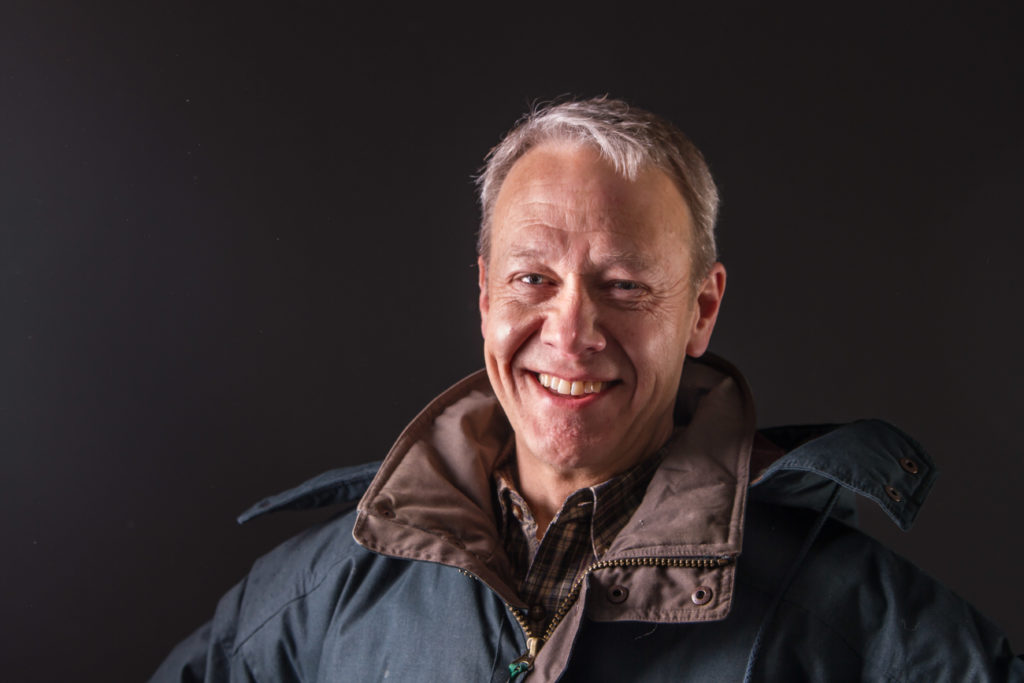

Toledoan David Lymanstall has been fascinated by the Iditarod Trail Sled Dog Race for as long as he can remember, going so far as raising his own husky dogs, teaching the Iditarod to his students and visiting Alaska twice in the late ’80s and early ’90s.
Now, Lymanstall, director of the nursing program at the University of Toledo and a published poet, has secured the opportunity of a lifetime and will be able to scratch “Iditarod volunteer” off his bucket list.
Lymanstall, 57, will help “line up” as many as 1,280 dogs at the ceremonial start in Anchorage, Alaska, on March 7, and again at the official start in Willow, Alaska, on March 8.
“I’m really excited about it,” Lymanstall said. “This is one of my bucket lists. I absolutely loved it up there. I went to a few husky farms around Nome. When I came home, that’s when I got my first husky.”
He owned Sitka for 14 years until she died in 1997. Five weeks later he found Gracie, a cinnamon and white husky, from a breeder in Lambertville. He owned Gracie until last January when she died of organ failure. Lymanstall said he plans to rescue an adult husky after this year’s Iditarod.
The Iditarod originated in 1925 when a diphtheria epidemic threatened isolated and icebound Nome, Alaska, prompting a relay of dog teams to deliver a serum that saved hundreds of lives. The final two legs of the journey were completed by Gunnar Kaasen with his lead dog, Balto. They traveled through a blizzard with winds over 80 mph. The relay of 20 mushers made the 700- mile trip in 127 hours, according to the official Iditarod website.
The effort received international attention and the mushers received special gold medals and a commendation by President Calvin Coolidge. Statues of Balto were erected around the country and the age of the sled dog went out in a blaze of glory, according to the website. In 1973, the first official Iditarod Trail Sled Dog Race was run between Anchorage and Nome.
When Lymanstall taught seventh and eighth grades at West Side Montessori, he sent for teaching material on the race. He tacked up a map of Alaska in his room and used it for lessons on geography and cultural history. Students would push in pins to mark the location of mushers on their trek from Anchorage to Nome. The student who tracked the winning musher would win a prize.
Lymanstall contacted a tour guide out of Alaska to plan his trip from March 2-10. Volunteering for the Iditarod race was an optional part of the trip. He contacted the Iditarod Trail Committee, the nonprofit that heads the race and was accepted as a volunteer in December.
Volunteers come from all walks of life and from around the world, said Julie Busch, Iditarod media coordinator.
“There are more than 1,500 volunteers that come from all over the world — Norway, France, Germany, Spain — you name it,” Busch said during a phone call from Anchorage. “We’ve had people come from Korea. It’s the premier sled dog race in the world.”
Lymanstall will be one of about 200 dog handler volunteers, who should be physically fit and must earn a certificate and undergo special training, said Diane Johnson, Iditarod volunteer coordinator.
“The dogs are priority one, so handlers must know how to safely move the dogs from the mushers’ staging area to the starting line,” Johnson said in an email from her base in South Dakota. She is also the education director of the Iditarod.
Eighty mushers have signed up for the race and each one will start the race with up to 16 dogs, Johnson said.
“One day I woke up in October and I needed to do this (volunteer). This is really my focus: I’m just fascinated by it, I can’t explain it,” Lymanstall said.
Bill Dickinson of Grand Rapids, Ohio,will also participate in the 2015 Iditarod as a guard for Trail No. 6, which is near Wasilla, Alaska. He’ll be stay in Alaska from March 1-21.
“I like to sightsee and take pictures and network,” he said.
Dickinson said he had plans to move to Alaska in 1976 but got hurt at work and had to cancel those plans. He instead bought a farm.






















